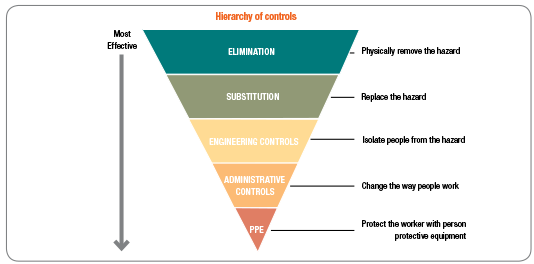
By / Hans Kriekenbeek, Industry and Labour Specialist, WorkSafeBC
In the sheet metal industry, welding is a commonly-executed work task. During welding activities, fumes and gases generated pose a serious threat to welders and to workers situated in close proximity. If not properly controlled, respiratory exposure to metal fumes and a combination of other gases could lead to serious illness and/or disease.
While worker respiratory exposure assessments are typically performed on welders because of their direct involvement, there are also concerns about workers situated in close proximity to the welders—both are at risk of over-exposure.
There are detrimental health effects from both short- and long-term exposure to the gases and fumes generated during welding, and the likelihood of contracting an occupational disease increases with higher concentration and longer exposure. Individual factors such as age and health of the exposed worker also play a role in the susceptibility of contracting an occupational disease. To address the risk, employers and employees must work together to mitigate potential exposures where possible by achieving regulation compliance and implementing safe work controls.
Regulation and standards
Because of the harmful consequences associated with respiratory exposure to the gases and fumes generated during welding, there is legislation within each jurisdiction that requires employers to assess the risk of exposure and address it by implementing various controls. In British Columbia, exposure limits are set for hundreds of chemicals. When it comes to welding, most of the gases and fumes that are generated have exposure limits.
When employers measure the gases and fumes their workers are exposed to, they may engage an industrial hygienist to assist them. This assessment can be completed through various exposure monitoring techniques. It is important to work with the industrial hygienist to determine optimal assessment methods. The results of these assessments would then be compared to the local occupational health and safety legislation standard. In B.C., the applicable standard is the WorkSafeBC Occupational Health and Safety Regulatory exposure limit table found at: https://www.worksafebc.com/ en/resources/law-policy/ohs-guidelines/table-exposure- limits-chemical-biological-substances?lang=en
Control approaches and strategies
Various exposure limits are constantly under review as new data on health effects and new analytical sampling techniques become available. Within BC, a reduction in the exposure limit for Manganese – one of the metals commonly associated with welding – was recently adopted. The exposure limit for a select particle size fraction of manganese has decreased by one order of magnitude; consequently, more effective controls need to be implemented to ensure that exposure among welders and workers in close proximity is kept below the adjusted exposure limit.
Effective controls generally follow a hierarchy with elimination at the forefront, followed by substitution, engineering, administrative, and personal protective equipment. By implementing controls at each level, the employer can improve the effectiveness of mitigating worker exposures to the gases and fumes generated during welding.

An example of a substitution control is exchanging welding rods that contain higher percentages of manganese for ones with significantly less. This would lead to a reduction of airborne manganese generated during welding activities. In addition, local exhaust ventilation that draws the gases and fumes away from the worker’s breathing zone is a tested and proven method of protecting workers. Wearing respiratory protective equipment, such as a tight-fitting respirator, also limits airborne exposures.
Other controls include, but are not limited to, general exhaust ventilation, changing the welding technique (e.g. such as using lower current, lower voltage), and training techniques such as speed of welding and body positioning in proximity to the exhaust fumes.
An effective management system helps assess all workers who could be potentially exposed. Once those workers have been identified, it is up to the organization to see what controls work best for their operations. This can be best done by working together with a combination of safety professionals, the joint occupational health and safety committee, and the workers themselves. A regular process of verifying the effectiveness of safe work controls should be conducted to ensure they are working properly. Ultimately, the goal is to ensure that an organization’s best resource – its workers – are kept safe from these exposures. ■
Hans recently joined WorkSafeBC in the Industry & Labour Specialist division having previously spent 13 years in the occupational health, hygiene, and safety (OHHS) consulting industry. His work offers occupational health and safety resources, outreach, and consulting services to the workers, employers and industries of British Columbia in support of WorkSafeBC’s vision of a British Columbia free from workplace injury, disease, and death.
